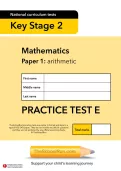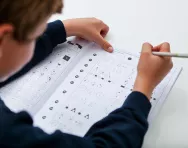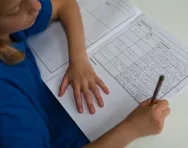Important update from TheSchoolRun
For the past 13 years, TheSchoolRun has been run by a small team of mums working from home, dedicated to providing quality educational resources to primary school parents. Unfortunately, rising supplier costs and falling revenue have made it impossible for us to continue operating, and we’ve had to make the difficult decision to close. The good news: We’ve arranged for another educational provider to take over many of our resources. These will be hosted on a new portal, where the content will be updated and expanded to support your child’s learning.
What this means for subscribers:
- Your subscription is still active, and for now, you can keep using the website as normal — just log in with your usual details to access all our articles and resources*.
- In a few months, all resources will move to the new portal. You’ll continue to have access there until your subscription ends. We’ll send you full details nearer the time.
- As a thank you for your support, we’ll also be sending you 16 primary school eBooks (worth £108.84) to download and keep.
A few changes to be aware of:
- The Learning Journey weekly email has ended, but your child’s plan will still be updated on your dashboard each Monday. Just log in to see the recommended worksheets.
- The 11+ weekly emails have now ended. We sent you all the remaining emails in the series at the end of March — please check your inbox (and spam folder) if you haven’t seen them. You can also follow the full programme here: 11+ Learning Journey.
If you have any questions, please contact us at [email protected]. Thank you for being part of our journey it’s been a privilege to support your family’s learning.
*If you need to reset your password, it will still work as usual. Please check your spam folder if the reset email doesn’t appear in your inbox.
What are primary school CATs?

Under the current National Curriculum, primary school children aren’t required to take any formal tests between the end of Year 2 (KS1 SATs) and the end of Year 6 (KS2 SATs). But schools still have to assess their achievement and attainment, which means putting in place their own systems for testing how they’re doing.
In many schools, this takes the form of ongoing teacher assessments or internal tests, but some primary schools opt to use formal tests called CATs (cognitive abilities tests) instead.
Primary school CATs explained
Primary school CATs, or CAT4 tests, to give them their official name, were developed by GL Assessment, a company that produces many resources for assessment, including the 11+ test in a number of areas. Rather than testing children’s knowledge, they’re designed to help teachers understand each child’s strengths and weaknesses as an individual.
‘While many tests focus on a child’s attainment in core subjects, CAT4 is designed to give schools a much broader, more rounded view of each child, their potential and how they learn,’ explains Sue Thompson, senior publisher at GL Assessment. ‘Results help teachers decide about the pace of learning that is right for a child, and whether additional support or challenge is needed.’
The tests can be taken on paper or on computers.


Prepare your child for SATs
- Your guide to SATs
- SATs revision courses
- SATs practice papers in English & maths
Which children are tested?
There are nine different levels of CAT4 tests, which can be used for children aged six to 17 years. In primary schools, children are given the following papers:
- Year 2: level X
- Year 3: level Y
- Year 4: level A
- Year 5: level B
- Year 6: level C
CAT4 tests are used by about half of UK secondary schools, and an increasing number of primary schools, in both the state and independent sectors.
It’s up to schools to decide when (or if) to administer CAT4s. ‘The test could be taken in every year from Year 2 to Year 12; however, children are generally only tested once or twice in primary school,’ says Sue.
What skills are tested?
Unlike SATs, which focus on core skills linked to the curriculum, primary school CATs focus on a child’s natural cognitive reasoning ability. Four specific areas are tested:
- Verbal reasoning: tasks involving words
- Non-verbal reasoning: tasks involving shapes and patterns
- Quantitative reasoning: tasks involving numbers
- Spatial ability: tasks involving mentally generating and transforming visual images
The types of questions your child might be asked include:
Quantitative reasoning
Each of these questions starts with two numbers that are linked together in some way. Next there are two more numbers linked in exactly the same way. You have to find out how the numbers are linked and then complete the third pair.
[2 3] [9 10] [6 ?]
Verbal reasoning
In each of these questions there are three words in bold type. These three words are similar in some way. Decide how they are the same. Then choose the word from the answer choices that goes with the first three words.
Green, blue, red
Answers: A) colour B) crayon C) yellow D) rainbow
‘The test provides an insight into children’s reasoning ability, and compares each child’s results to the national average for their exact age,’ Sue explains. ‘This information can then form the basis of discussions about how that child can best learn and reach their potential in school.’
What do the results mean?
CAT4 tests are returned to GL Assessment for marking. The reports are then sent to the school.
Along with the actual results, teachers are given guidance on how children can be helped to reach their potential, based on their CAT4 outcomes. ‘Teachers are also provided with a range of indicators of likely future performance, as well as an individual profile of each child’s learning preference,’ says Sue. ‘All of this information can be used to support teaching and learning for all children.’
Some schools will buy individual reports for parents. These give an overview of the CAT4 tests, an explanation of their child’s results, and where their strengths and weaknesses lie. It also includes suggestions to help further their learning at home.
It’s important not to panic if your child appears to have performed badly in the tests. CAT4s are not statutory tests set by the Government, and have no bearing on school league tables. Rather, a poorer than expected result will allow teachers to work out how they can best support an underachieving child.
‘If a child is below the national average, the teacher must then look at the context and understand why this is, and decide the next steps to support them,’ says Sue. ‘The reports provide teachers with some suggested strategies that can be implemented both at school and at home.’
Similarly, if your child performs very well, the results will help inform the teacher about how they can be challenged and extended, at school and at home.
Should your child prepare?
Although you may be told in advance that your child will be taking a CAT test, you won’t be expected to do any preparation at home. In fact, GL Assessment strongly advises against preparing in advance.
‘The point of CAT4 is that it’s not a test of learnt knowledge, and it needs to be as unaffected as possible by external factors, such as practice,’ Sue explains. ‘Think of it like an eye test: if you practise ahead of the test by memorising the card, your diagnosis may not be correct and valuable information may be missed.’








